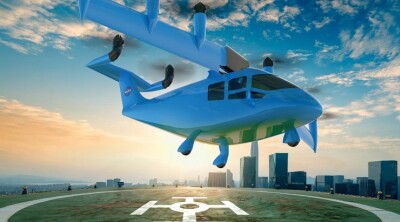The aviation business is the perfect example of corporate consolidation as a sign of maturity in an industry. Just a few years ago there were at least three major airliner manufacturers in the US alone, namely Boeing, Lockheed Martin (remember the infamous L-1011 Tristar?), and MacDonnell-Douglas. Today only one exists: Boeing.
A similar story occurred, simultaneously, in general aviation where we had five major manufacturers building single engine, light twins and corporate jets for the civilian market, Cessna, Beechcraft, Piper, Lear Jet, and Gulfstream. Now only Piper and Gulfstream are independent companies, the rest have been absorbed into large conglomerates such as Textron Aviation and Bombardier.
But crewed or traditional aviation has been around for over 100 years, so it is understandable that decades of experience and trial and error have resulted in stronger companies and more robust products. Leaving the recent snafus by Boeing apart for a second, airliners today are safer and more reliable than they have ever been, and the industry is considered the safest way to travel by a wide margin.
In the case of uncrewed aviation, which can be considered an industry still in diapers, this consolidation has not really started in force and the prevailing attitude is the daily proliferation of new startups with brilliant ideas and dubious business models.
This week, we saw an announcement that might indicate that the creation of the behemoths of the future has begun when Drone Delivery Canada announced it was merging with the drone services company Volatus Aerospace Corp.
This merger seems to combine the drone manufacturing and design capabilities of one company with the sound and proven business model of another. The question is would that be enough to cross the difficult threshold of revenue and external investment higher than operating expenses?
That lack of new investment and the inability to generate enough revenue is exactly what killed the Swedish company Aerit as it announced on May 23 that it was filing for bankruptcy. When we analyzed the business model that Aerit chose to penetrate the delivery market, we noticed a misguided focus on the end user, the consumer at the end of the distribution line, in other words, the last mile.
Companies that insist on delivering goods to end users before we have a global BVLOS (flights beyond visual line of sight) regulation are destined to hit a brick wall, no pun intended. Delivering a package to a person or a company is the most difficult phase of the delivery process because it involves different landing conditions on every flight. In other words, we know the takeoff site, we might be familiar with the route, but we are not familiar with the landing site conditions.
Companies like Aerialoop in the greater Latin America area and Orkid in Colombia have instead focused on different aspects of the complicated delivery workflow. Aerialoop focuses entirely on the middle mile, allowing traditional delivery companies to use its drones to cross impossibly congested cities and delegating the first and last mile to traditional distribution methods. Orkid, on the other hand, is exclusively focused on the business to business (B2B) sector by linking wholesale pharmacies with large hospitals in an effort to expedite deliveries of life-saving supplies.
Another great example of successful business models is Speedbird, a Brazilian company that has expanded worldwide and regardless of the fact that they have chosen deliveries to the end user, their savvy approach to technology and commercial applications has allowed them to survive and thrive.
As we wait for the BVLOS regulation in both Europe and the US, companies around the world are finding ways to generate enough revenue and attract sufficient investment to accumulate flying hours in an effort to find the sweet spot of a nascent industry. Let us hope that we see more success stories and more consolidation and fewer heart-breaking failures.















Comments